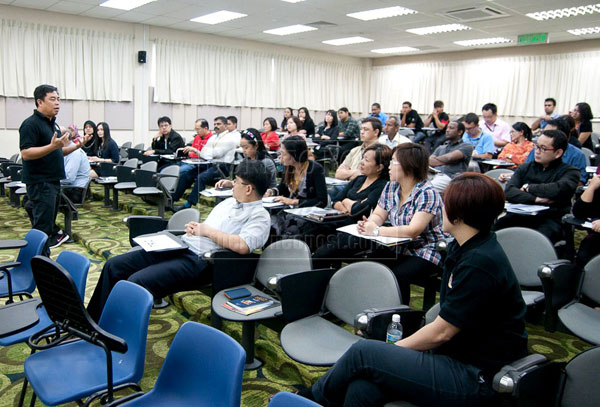MIRI: Around 40 Curtin Sarawak academic and professional staff learnt new ways to solve problems during the recent MyTRIZ Workshop.
Jointly organised by the Multimedia Development Corporation (MDeC) and the university, the two-day workshop was facilitated by MDeC senior manager Tan Eng Hoo and senior executive Ashley Cheah.
Topics discussed included ‘Systematic Innovation’, ‘Structured Problem Solving Process’, ‘TRIZ from Methodology, Adoption’, Applications in Manufacturing’ and ‘Malaysia TRIZ Syllabus’.
“If the only thing you have is a hammer, then every problem is a nail. The TRIZ workshop did not just give me a bigger and better hammer, it also showed me many other tools. Now, with an expanded toolbox, I can tackle different types of problems with ease,” said Curtin electrical and computer engineering senior lecturer Terence Tan.
University life manager Haslina Malek also found the workshop highly stimulating.
“I enjoyed the two-day training tremendously. I think I have caught the ‘TRIZ bug’. I see TRIZ as the possible missing link to drive entrepreneurial thinking in our students,” she said.
“TRIZ’s structured approach to inventive problem-solving could be easily replicated and applied, and with enough critical thinking and practice, one could eventually unleash his or her innovative ability.”
Marketing and Management Department head Associate Professor Dr Alan Downe added: “I’m equally excited about using it as a research tool and exploring new ways of applying it in managing workplace environments.”
TRIZ is a Russian acronym for ‘Theory of Innovative Problem Solving’ created by Genrich Saulovich Altshuller in 1946 to systematise processes and procedures related to innovation and creativity in problem solution.
It is an international science of creativity that relies on the study of the patterns of problems and solutions, and not just the spontaneous creativity of individuals or groups.
The TRIZ methodology has proven to be the most efficient for inventive problem-solving and is applied by companies such as Boeing Corporation, Daimler Chrysler, Ford, Hitachi, IBM, Nasa, Samsung, Toyota and Whirlpool.

